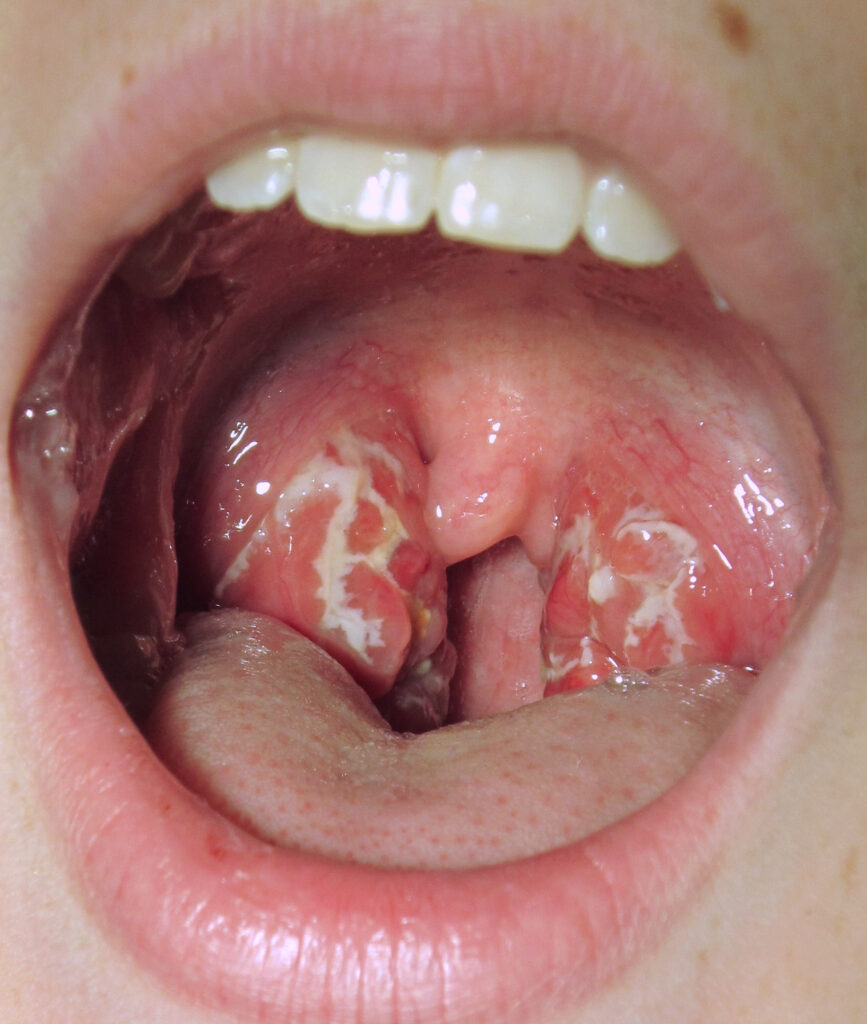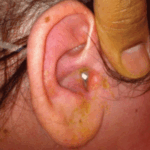Acute streptococcal epiglottitis is a rapidly progressing infection of the epiglottis, primarily caused by Streptococcus pyogenes. This medical emergency can lead to life-threatening airway obstruction, necessitating immediate medical intervention. Early recognition and prompt treatment are crucial to prevent fatal outcomes.

Pathophysiology of Streptococcal Epiglottitis
The infection leads to severe inflammation and swelling of the epiglottis, obstructing airflow and increasing the risk of asphyxiation. Streptococcus pyogenes releases toxins and enzymes that contribute to tissue damage and immune system overreaction.
Causes and Risk Factors
The primary cause is Streptococcus pyogenes, but other bacteria like Streptococcus pneumoniae and Haemophilus influenzae can also contribute. Risk factors include:
- Age: More common in children and immunocompromised adults.
- Recent Upper Respiratory Infection: Can predispose individuals to bacterial invasion.
- Weakened Immune System: Increases susceptibility.
- Lack of Vaccination: Higher risk in individuals not vaccinated against Haemophilus influenzae type B (Hib).
Clinical Symptoms
Symptoms often develop suddenly and worsen rapidly. Key signs include:
- Severe Sore Throat: Despite a relatively mild appearance on examination.
- Dysphagia (Difficulty Swallowing): Due to swollen epiglottis.
- Drooling: Inability to swallow saliva.
- Stridor: High-pitched breathing sound due to airway obstruction.
- Fever and Malaise: Systemic signs of infection.
- Tripod Positioning: Patients may lean forward to facilitate breathing.
Diagnosis
Early diagnosis is critical. Diagnostic methods include:
- Clinical Evaluation: Observation of symptoms and medical history.
- Lateral Neck X-ray: Shows “thumbprint sign,” indicating swollen epiglottis.
- Laryngoscopy: Direct visualization of the inflamed epiglottis.
- Blood Cultures and Throat Swabs: Identify the causative bacteria.
Emergency Treatment and Management
1. Airway Management
- Immediate endotracheal intubation may be required to secure the airway.
- Tracheostomy in severe cases where intubation is impossible.
2. Antibiotic Therapy
- Empirical IV antibiotics: Ceftriaxone or ampicillin-sulbactam.
- Targeted therapy: Adjusted based on bacterial culture results.
3. Adjunctive Treatments
- Corticosteroids: Reduce inflammation and airway swelling.
- Humidified Oxygen Therapy: Supports breathing.
- Intravenous Fluids: Prevents dehydration due to swallowing difficulty.
Prevention Strategies
- Vaccination: Hib vaccine significantly reduces risk.
- Prompt Treatment of Strep Infections: Early antibiotic therapy prevents complications.
- Good Hygiene Practices: Reduces bacterial transmission.
Prognosis and Complications
With early intervention, prognosis is favorable. However, delays in treatment can result in:
- Complete Airway Obstruction
- Septic Shock
- Aspiration Pneumonia
- Death
Acute streptococcal epiglottitis is a medical emergency requiring rapid diagnosis and intervention. Effective airway management, antibiotics, and preventive strategies significantly improve patient outcomes. Awareness and early recognition are crucial to preventing severe complications.

